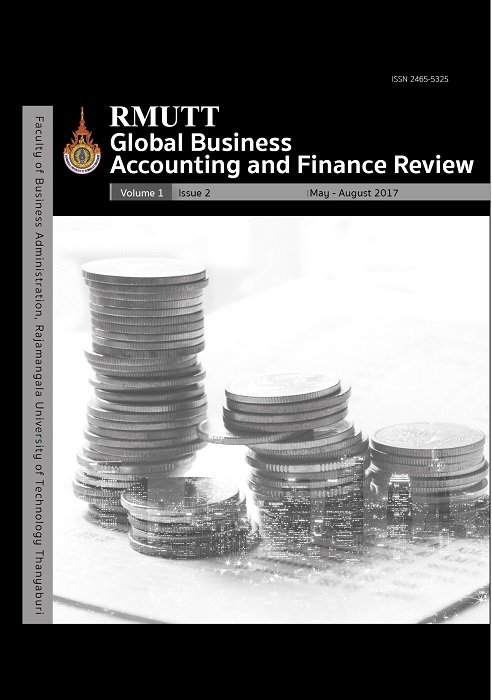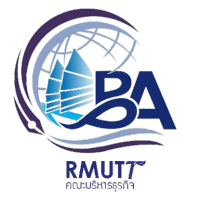Mechanism of Saving Activity and Community Business Administration for Decreasing Household Debt
คำสำคัญ:
Household Debt, Savingบทคัดย่อ
The purpose of the research project entitled “The Mechanism of Saving Activity and Community Business Administration for Decreasing Household Debt” was to investigate the pattern and guideline on household debt management by using the mechanism of saving, community business administration, and household financial management which was beneficial efficiently and sustainably. The research methodology emphasized on qualitative method comprised participatory observation, in-depth interview, and workshop. Furthermore, the quantitative method was also conducted by surveying household debt. The research results revealed that the members of saving groups saved their money based on five moral principles consisting of honesty, devotion, responsibility, sympathy, and trustworthiness. In addition to, they needed to create the source of community fund for consumption loan and household investment with lower interest rate. The process of household debt management began with saving and borrowing their loan for consumption and investment. They developed the discipline of saving and learned to manage their money for decreasing their debt. Moreover, they also linked the saving activities to expand their saving network to community enterprise in order to produce, for instance, drinking water, dishwashing liquid, and paper flower sold to members and people in the community at low prices to decrease their expenses. Nevertheless, the saving activity network was also expanded to provide social welfare to the members and people in the community.
เอกสารอ้างอิง
Barnes, S. and Young G. (2003). The Rise in US Household Debt: Assessing its Causes and Sustainability (November 2003). Bank of England, Working Paper No. 206. Retrieved 2 August 2016, from http://ssrn.com/abstract=597444 or http://dx.doi.org/10.2139/ssrn.597444
Dynan, K.E. and Kohn, D.L. (2007) The Rise in U.S. Household Indebtedness: Causes and Consequences (8 August 2007). FEDS Working Paper No. 2007-37. Retrieved 2 August 2016, from http://ssrn.com/abstract=1019052 or http://dx.doi.org/10.2139/ssrn.1019052
Economic and Social Commission for Asia and the Pacific. (2009). Economic and Social Survey of Asia and the Pacific 2009: Addressing Triple Threats to Development. United Nations Publication, Thailand.
Investopedia. (2016). Definition of Household Debt to Income Ratio. Retrived 2 August 2016, from http://www.investopedia.com/terms/d/dti.asp
Karasulu, M. (2008). Stress Testing Household Debt In Korea. International Monetary Fund.
Mayer, D. (2007). The Home Mortgage Book: Insider Information Your Banker & Broker Don’t wants you to know. Atlantic Publishing Group, Inc., United States.
National Statistical Office. (2004). Household Debt. (In Thai). Retrieved 2 August 2016, from http://poverty.nesdb.go.th/poverty_new/doc/nESDB/wanchat_20060130073545.pdf
National Statistical Office. (2008). The 2007 Household Socio-Economic Survey – Whole Kingdom. Retrieved 2 August 2016, from http://service.nso.go.th/nso/nsopublish/service/survey/socioRep_50.pdf
Rangruxsirivon, O. (2006). The Annual Report 2006 of Fiscal Policy Office.
Short, Kathleen S. (2015). Hardship, Debt, and Income-Based Poverty Measures in the USA, in Thesia I. Garner , Kathleen S. Short (ed.) Measurement of Poverty, Deprivation, and Economic Mobility (Research on Economic Inequality, Volume 23) Emerald Group Publishing Limited, pp.283 – 299.
Thairungroj, S. and Raktham, W. (2006). An analysis of Thai Households aggregate consumption and the relevant behavioral functions. University of the Thai Chamber of Commerce Journal Humanities and Social. Vol.26, No.2, April-May, pp.39-70.
Tuleda, T. and Young G. (2005). The determinants of house hold debt and balance sheets in the United Kingdom. Retrieved 2 August 2016, from file:///C:/Users/Biw/Downloads/SSRN-id824227.pdf
Turk, R.A. (2015). Housing Price and Household Debt Interactions in Sweden. IMF Working Paper.









